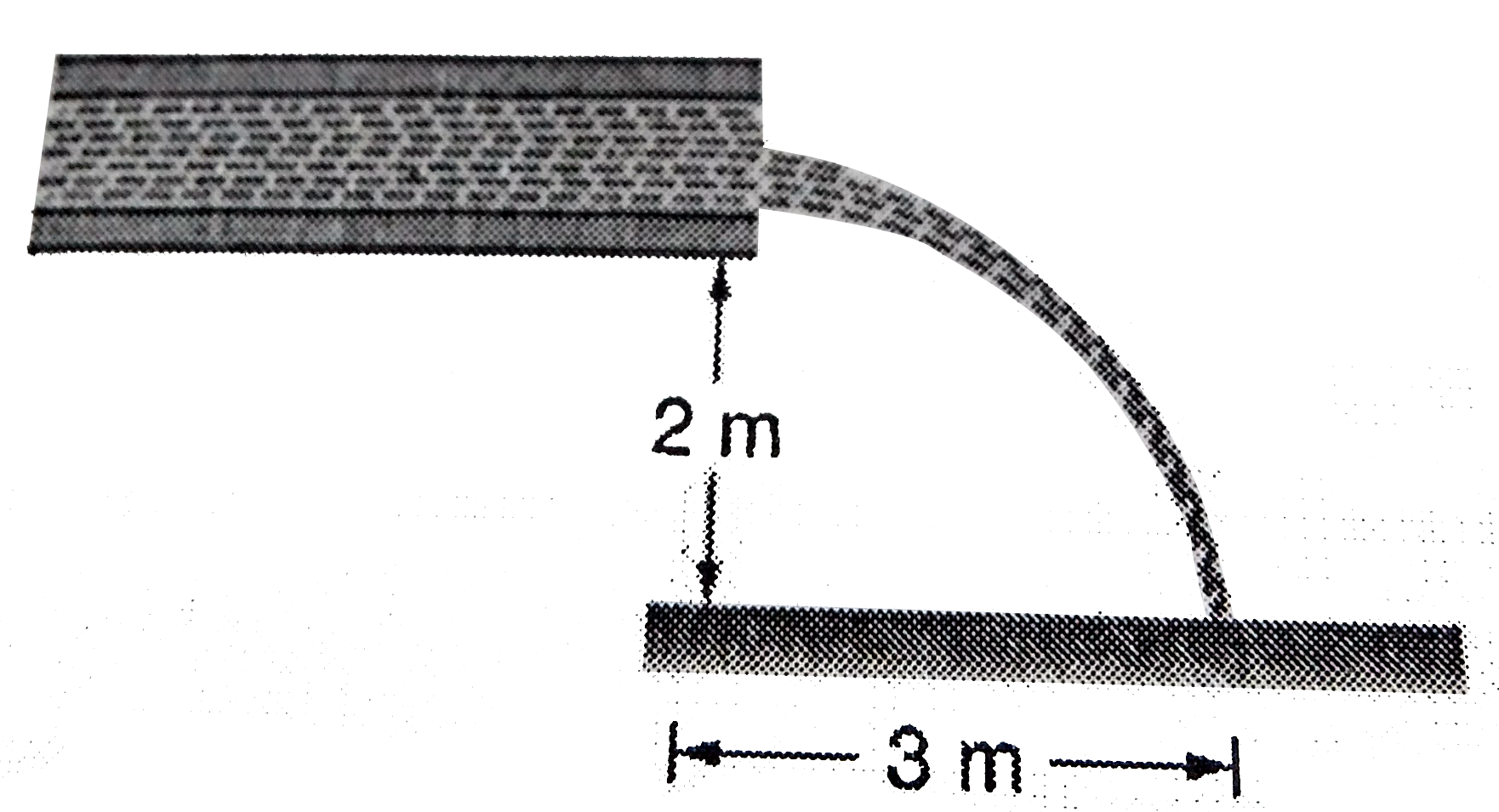Water flowing through a horizontal pipe line having a constriction. Then,
pressure will be the same througghlut the length of the pipe.
pressure will be greater at the constiction.
pressuce will be smaller in the wider portion.
pressure will smaller at the constriction.
The correct Answer is:D
Step-by-Step Solution:
1. Understanding the Problem: We have water flowing through a horizontal pipe that has a constriction. We need to analyze how the pressure and velocity of the water change as it flows through the constriction.
2. Applying Bernoulli's Equation: Bernoulli's equation states that for an incompressible, non-viscous fluid flowing in a streamline, the total mechanical energy along a streamline is constant. The equation is given by:
P+12ρv2+ρgh=constant
Since the pipe is horizontal, the height (h) remains constant, and we can ignore the gravitational potential energy term.
3. Identifying Areas and Velocities: Let:
- A1 = cross-sectional area of the pipe before the constriction
- A2 = cross-sectional area at the constriction
- v1 = velocity of water before the constriction
- v2 = velocity of water at the constriction
According to the continuity equation for incompressible fluids:
A1v1=A2v2
This implies that if A1>A2, then v2>v1.
4. Relating Pressures and Velocities: Using Bernoulli's equation between two points (before and at the constriction), we can write:
P1+12ρv21=P2+12ρv22
5. Solving for Pressure: Rearranging the equation gives:
P2=P1+12ρv21−12ρv22
Since v2>v1, it follows that 12ρv22>12ρv21. Thus,
P2<P1
This means that the pressure at the constriction (P2) is less than the pressure before the constriction (P1).
6. Conclusion: The pressure decreases as the water flows through the constriction in the pipe.
P+12ρv2+ρgh=constant
Since the pipe is horizontal, the height (h) remains constant, and we can ignore the gravitational potential energy term.
- A1 = cross-sectional area of the pipe before the constriction
- A2 = cross-sectional area at the constriction
- v1 = velocity of water before the constriction
- v2 = velocity of water at the constriction
A1v1=A2v2
This implies that if A1>A2, then v2>v1.
P1+12ρv21=P2+12ρv22
P2=P1+12ρv21−12ρv22
Since v2>v1, it follows that 12ρv22>12ρv21. Thus,
P2<P1
This means that the pressure at the constriction (P2) is less than the pressure before the constriction (P1).
Topper's Solved these Questions
- FRICTION IS SOLIDS AND LIQUIDS BOOK - TARGET PUBLICATIONCHAPTER - FRICTION IS SOLIDS AND LIQUIDS EXERCISE - MCQ (COMPETITIVE THINKING)
97 Videos
- FRICTION IS SOLIDS AND LIQUIDS BOOK - TARGET PUBLICATIONCHAPTER - FRICTION IS SOLIDS AND LIQUIDS EXERCISE - MCQ (EVALUATION TEST)
21 Videos
- FRICTION IS SOLIDS AND LIQUIDS BOOK - TARGET PUBLICATIONCHAPTER - FRICTION IS SOLIDS AND LIQUIDS EXERCISE - MCQ (EVALUATION TEST)
21 Videos
- FORCE BOOK - TARGET PUBLICATIONCHAPTER - FORCE EXERCISE - Evaluation Test
16 Videos
- MAGNETIC EFFECT OF ELECTRIC CURRENT BOOK - TARGET PUBLICATIONCHAPTER - MAGNETIC EFFECT OF ELECTRIC CURRENT EXERCISE - Evaluation Test
12 Videos
Similar Questions
Water is flowing through a horizontal pipe of varying cross-section. If the pressure of water equals 2 cm of Hg where velocity of flow is 32cms−1, what is the pressure at another point where the velocity of flow is 40cms−1?
View SolutionA liquid is flowing through a horizontal pipe line of varying cross - section .At a certin point the diameter of the pipe is 6cm and the velocityof flow of liquid is2.0cms−1 Calculate the velocity of flow at another point where the diameter is 1.5 cm.
View Solution
Knowledge Check
Water is flowing through a horizontal pipe of non-uniform cross- section. At the extreme narrow portion of the pipe, the water will have
AMaximum speed and least pressureBMaximum pressure and least speedCBoth pressure and speed maximumDBoth pressure special leastWater is flowing through a horizontal pipe fixed at a height of 2 m above the ground as shown in Fig. 5.90. water strikes ground at a distance of 3m from the pipe. The speed of water as it leaves the pipe is:
 A47m/sB4.7m/sC9.4m/sD4.9m/s
A47m/sB4.7m/sC9.4m/sD4.9m/s
Water flows through a horizontal pipe of varying area of cross-section at the rate 5 cubic metre per minute. What is the velocity of water at a point where pipe radius is 10 cm?
View SolutionWater flows through a horizontal pipe of varying area of cross section at the rate 15 cubic metre per minute. Find the radius of pipe where water velocity is 3 ms−1
View SolutionWater flows through a horizontal pipe of varying area of cross-section at the rate of 10 cubic metre per minute. Determine the velocity of water at a point where radius of pipe is 10cm.
View SolutionWater flows through a horizontal pipe of varying cross-section at the rate of 20 litres per minuts , determine the velocity of water at a point where diameter is 4cm
View SolutionWater flow through horizontal pipe of varying cross-section at the rate of 1/2 liter per second. Determine the velocity of flow of water at a point where the diameter is (a) 4cm (b) 2cm.
View SolutionWater is flowing through a horizontal pipe whose one end is closed with a valve. Initially the pressure recorded by pressure gauge ia 4×105N/m2. On opening the valve, the pressure gauge records 2×105N/m. Find the speed of water flowing through the pipe.
View Solution
